First shown off to the public last Autumn, the Sixer is a fresh top-of-the-line lid from Bell Helmets. Designed as a replacement for the venerable Super – one of the original (and most popular) half-face trail helmets on the market – the Sixer aims to provide similar amounts of coverage and protection, but in a lighter, sleeker and better ventilated package.
The Sixer has recently become available in the UK for the not-inconsiderable price of £149.99, and I’ve been using one for the past few months to find out just how improved this lid is over the original classic.

Bell Sixer MIPS Helmet Features
- Fusion in-moulded polycarbonate shell
- Exposed polycarbonate roll cage
- EPS foam core with Progressive Layering
- 26 vents (including 4 brow ports)
- Removable X-Static padding with Sweat Guide
- 4-Position adjustable visor
- Goggle Gripper
- Float Fit Race fit system with integrated MIPS
- No-twist Tri-Glides
- Integrated breakaway camera mount
- Claimed weight: 395g
- Sizes: Small (52–56cm), Medium (55–59cm), Large (58–62cm) & X-Large (61-65cm)
- Colours: All of them
- RRP: £149.99

Though it’s pitched as a trail helmet, the Sixer hides its bulk well. This is exacerbated when it’s placed side-by-side with the current Super 3, which looks positively celestial in comparison. The Super has always been a stubby helmet with love or hate looks, but you don’t realise how comically huge it is until it’s next to the new Sixer.
With a more streamlined look front-to-back, the Sixer is equipped with Bell’s new ‘Progressive Layering’ multi-density EPS foam core. The general thrust of Progressive Layering is that it aims to put softer density foam closer to your skull where it can more easily deform and absorb slower-speed impacts, with firmer density foam on the outside that provides the necessary strength and rigidity to cope with harder and faster hits. It’s a construction technique that we’ve seen in other high-end helmets from the likes of Kali Protectives and Troy Lee Designs, and it’s one that makes a load of sense.
Overall the Sixer’s shape is much narrower and less blobby than the Super, though while the Sixer is indeed lighter, it isn’t as much as claimed. Our medium-sized test lid tipped the scales at 400g, which is only 20g lighter than the equivalent Super 3.
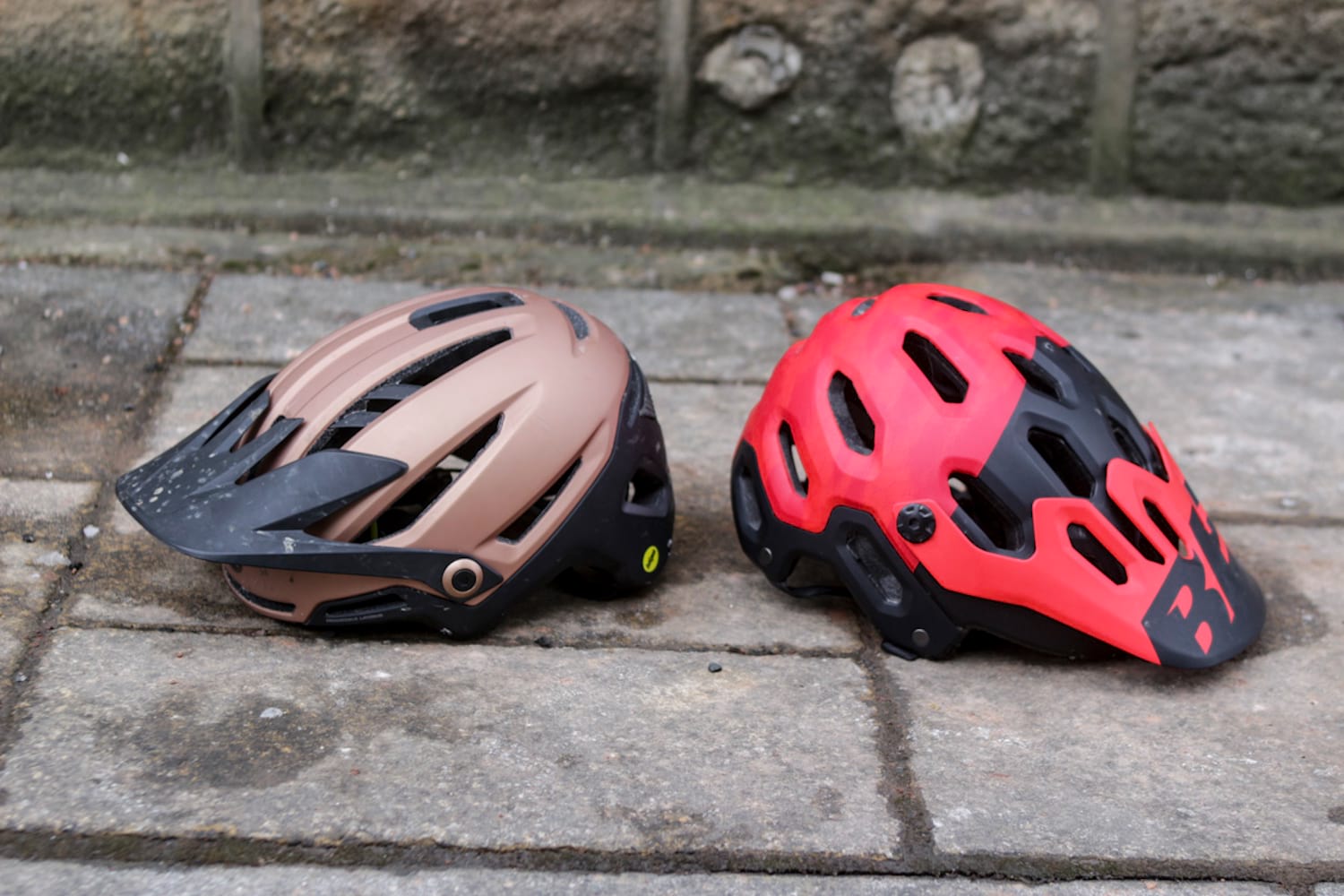
Swish Finish
As you’d expect at the asking price, the Sixer is finished well. The copper/black colour might not please the fluoro brigade, but I think it looks quite classy. And if it isn’t to your taste, you’ll be happy to know that other colours such as ‘Cheery Fibers’, ‘Hibiscus’ and ‘Retina Sear’ are also available.
There’s a full in-mould polycarbonate shell that splits into two main sections; the copper-coloured section on top of the helmet, and the matte-black section that covers the base and the underside of the helmet’s rim. I’ve spent a load of time travelling on planes, trains and in shuttle vans lately, and despite being banged about with the utmost lack of care, the Sixer is still looking good.

Tidy, colour-matched visor hardware provides you with four indexed tilt positions. The lowest might be a little unfashionable, but I appreciated it recently while riding on some bright and sunny Santa Cruz trails. In the visor’s highest position, you could probably land light aircraft on it. However, it is a functional position that’ll suit those who subscribe to the often controversial goggle-and-half-face helmet look.
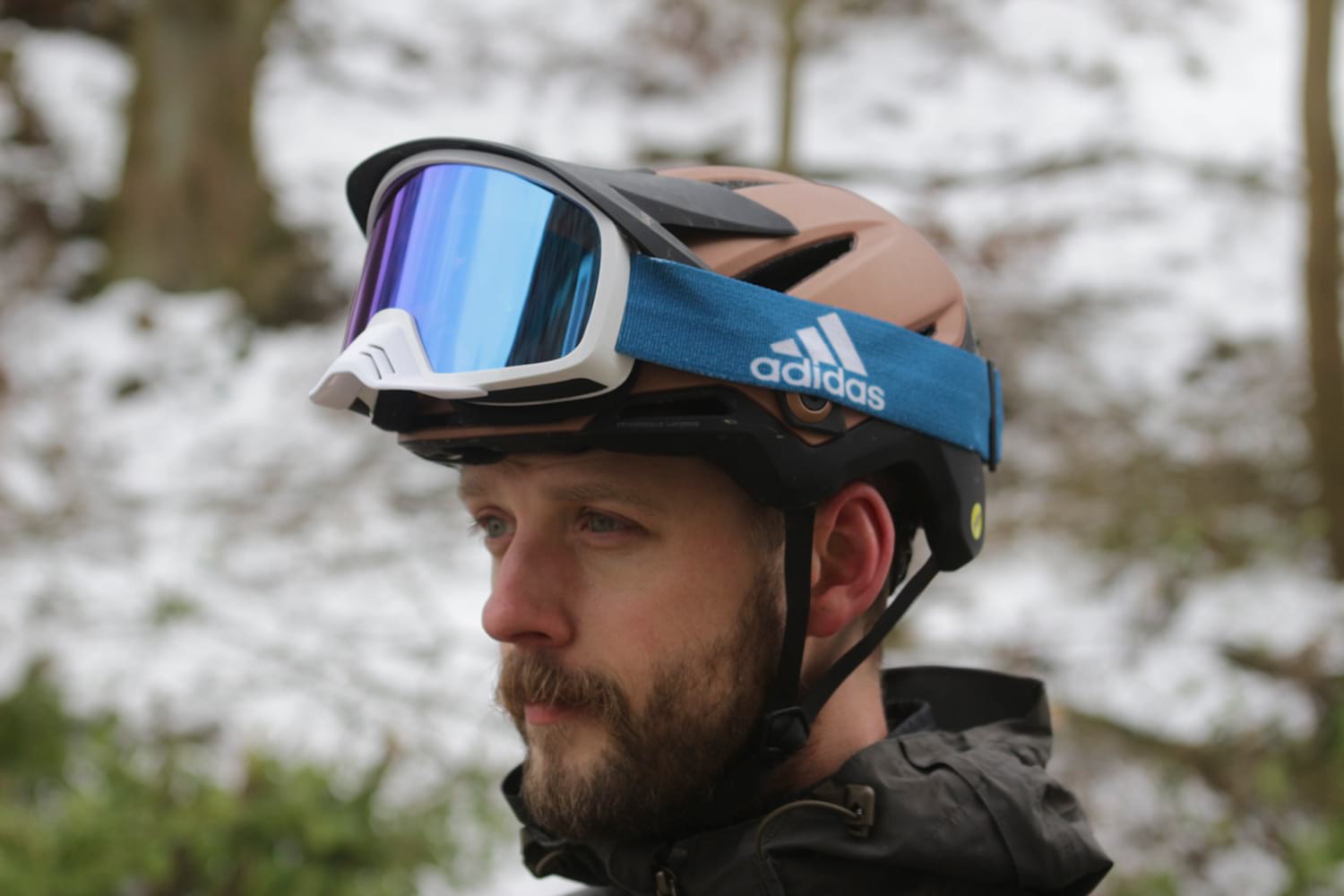
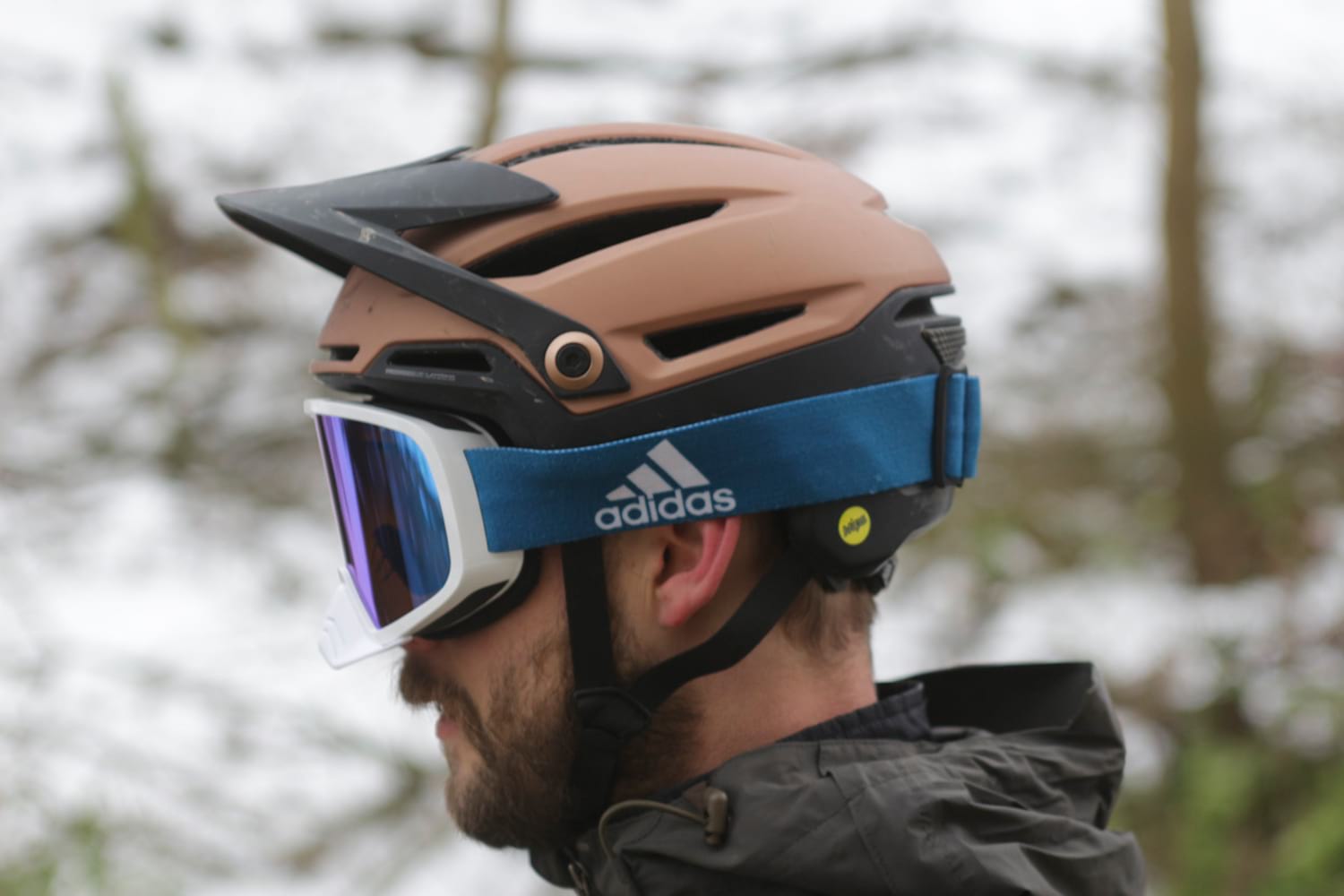
Speaking of goggles, Bell has added some textured rubber around the rear of the helmet that should help to hold onto straps a little more securely. A light ridge is also used to stop the strap from sliding down the back of the helmet. Another neat feature is the inclusion of a removable mount for attaching a GoPro or other such POV cameras, which is easy to clip in and out thanks to a spring-loaded catch. This mount is engineered with a breakaway feature, so in the event of a crash, the camera will jettison away safely. The mount on my preproduction helmet was a bit wobbly, but this has been rectified on production lids.
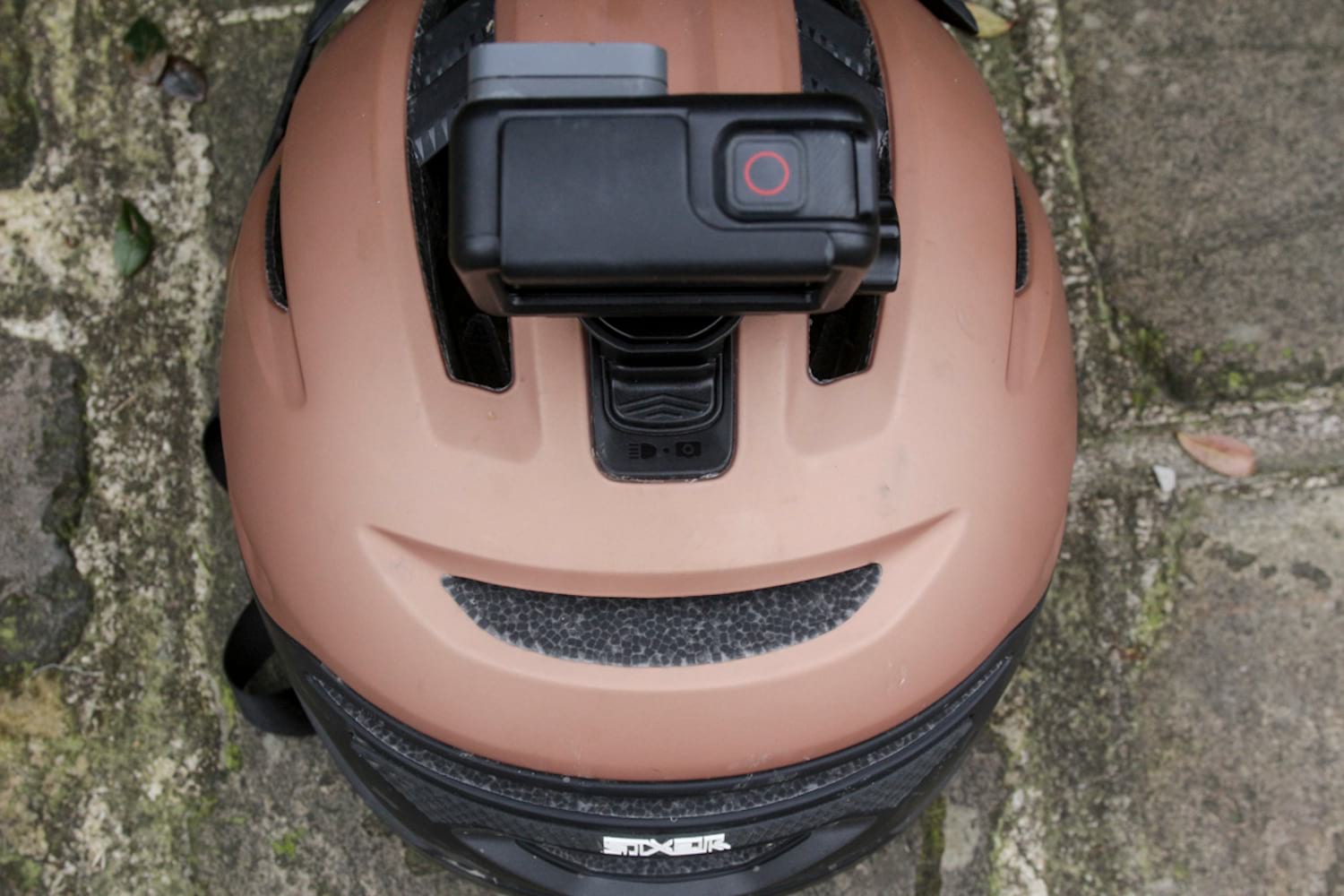
Stealth MIPS
Aside from a small sticker on the back of the helmet, it isn’t immediately obvious that the Sixer comes with a MIPS liner, partially because on the helmet we’ve got, the MIPS liner isn’t bright red or yellow, but matte black instead.
In terms of fit, the MIPS liner is equally unnoticeable. I sometimes find MIPS-equipped helmets to feel overly wobbly atop of my head, but the Sixer doesn’t. The liner is quite low profile, so it doesn’t take up a lot of room inside the helmet, and that gives a snug fit. There are four yellow elastomers that hold the MIPS liner to the helmet, and while these will allow the helmet to rotate over your skull in the event of a crash, they aren’t so flexible as to be noticeable under normal riding conditions.
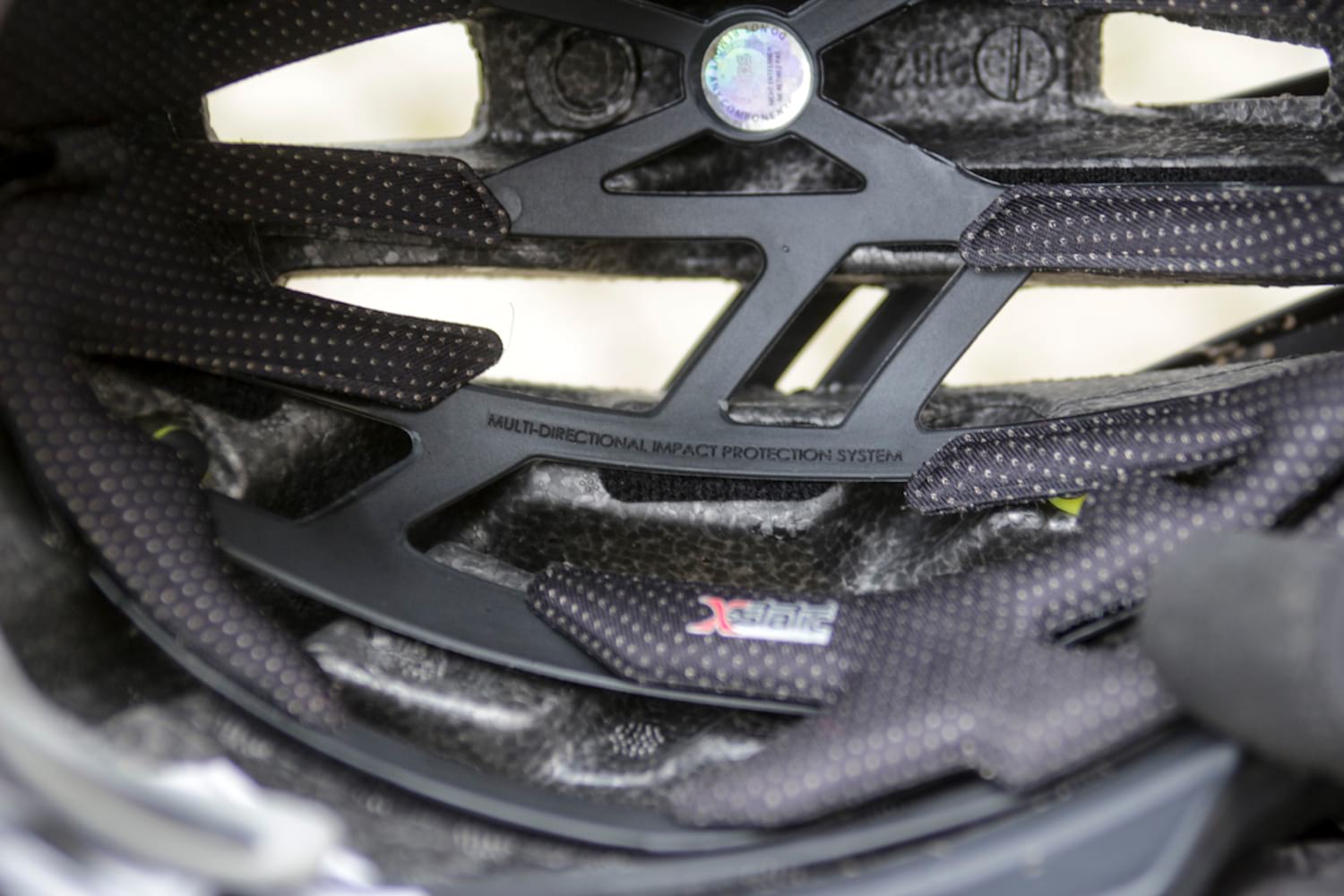
Bell is using its latest Float Fit Race harness for the Sixer, which features a small adjustable rubber dial at the back (excellent for one-handed adjustments while riding), and a four-position vertical adjustment for getting the cradle of the harness in the right position around the back of your noggin. The straps are quite thin and unnoticeable, and I found the plastic guides to be easily adjustable for directing the straps on either side of my ears.
The adjustment range is totally sufficient, and it’s all very easy to use while riding. In fact, for extended downhills, I can actually reach back with one hand to lower the cradle of the harness and wind up the tension a couple of notches, which provides just a little bit more security if the trail gets bouncy. When the trail turns flat or goes up again, it’s easy to return the harness back to its original position.

Easy Breezy
Aside from aesthetics, ventilation is no doubt the biggest improvement on the Sixer over the old Super 3 – a helmet that could dehydrate your noggin like a piece of beef jerky if the conditions were warm enough.
There are more vents on the Sixer, which helps, but it’s the orientation of the vents that helps to bring cool air inside the helmet. Whereas the Super just has small vents seemingly randomly dotted around the shell, the Sixer uses longer vents that combine with internal channels through the foam core that keep air recirculating. And while I initially thought they were just decorative, the four black plastic spoilers on top of the helmet are surprisingly effective at catching passing air and pushing it down towards your sweaty head.
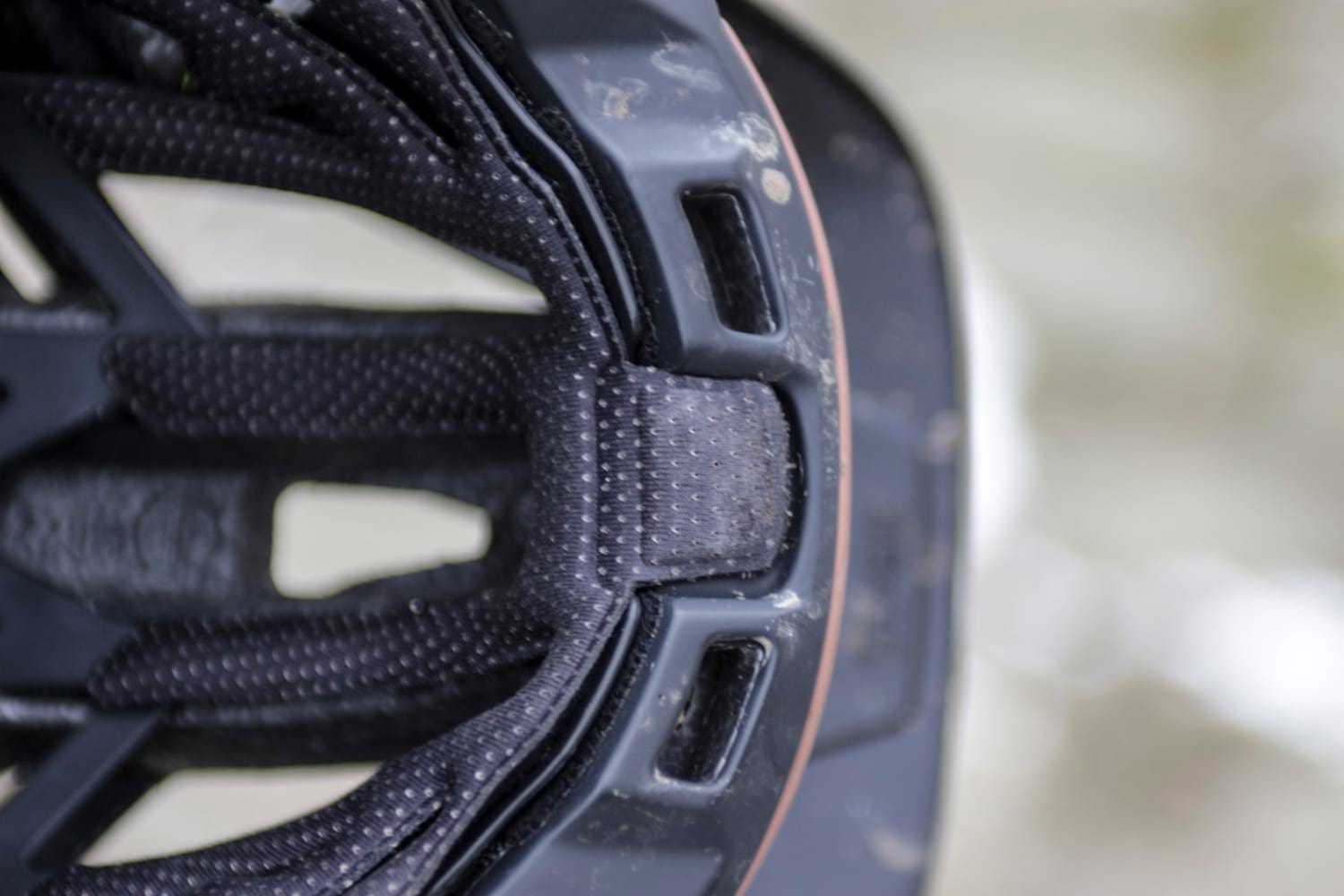
Given I received the Sixer just before Christmas, its cooling properties have been especially noticeable over the colder winter months. Aside from superlight XC helmets, the Sixer is easily the most ventilated helmet in my collection. That means for those who reside in colder climates, you’ll want to ensure that you’ve got a nice thin skullcap for use on icier days.
If you do manage to warm up enough to get a sweat on, Bell has designed the padding inside the Sixer to soak up sweat on your brow, and draw it away from your eyes and glasses. And it actually works! Rather than sweat rolling down your face, it tends to drop off the small section of padding away from you. Additional vents over the brow of the helmet also work to dry out the padding before it gets saturated in the first place.
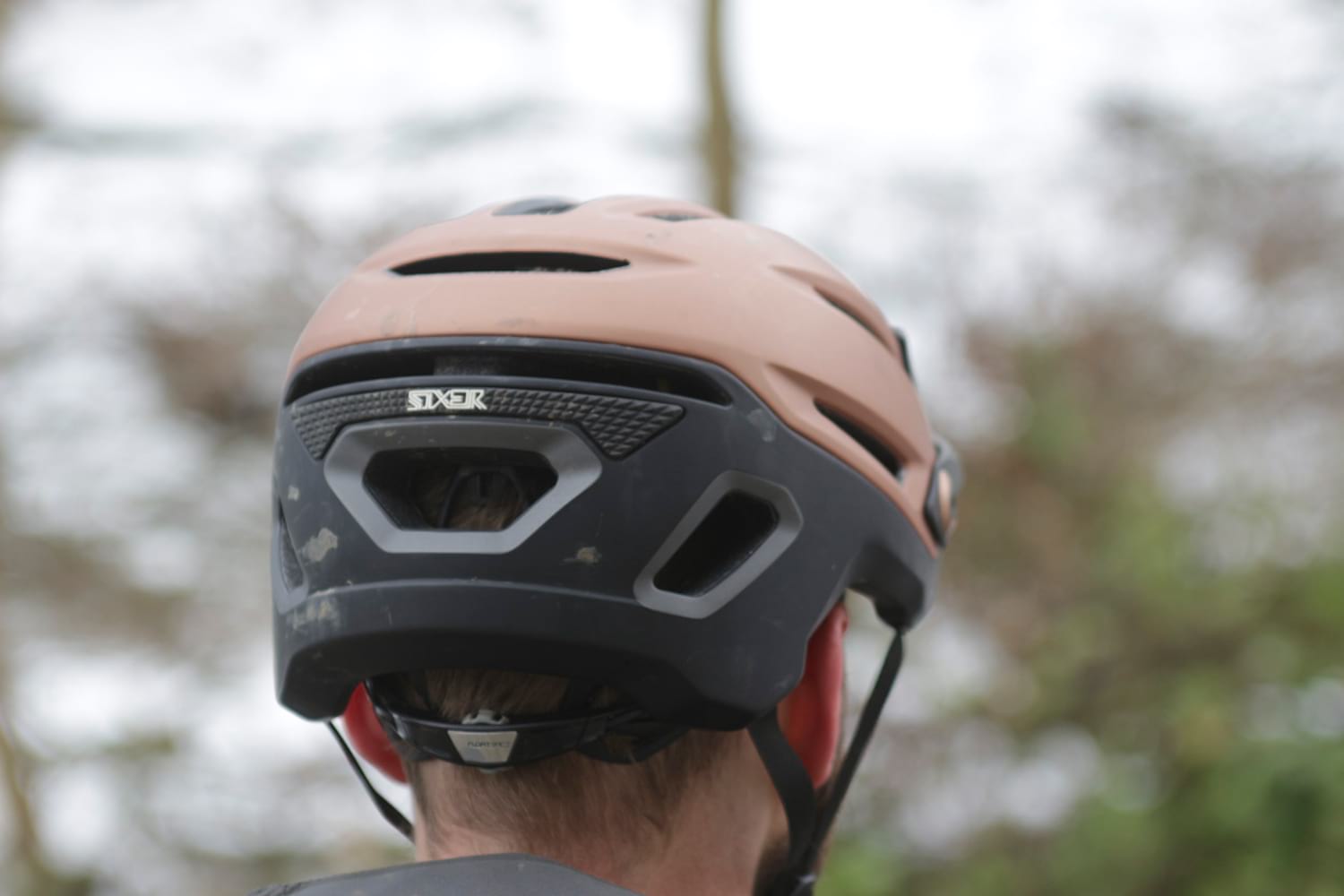
Overall
I’ve very little to complain about with the Bell Sixer. This is a top quality helmet that fits well with minimal MIPS-induced wobble, and for the amount of coverage and protection on offer, it is supremely well ventilated. With a well thought-out visor and clever camera and goggle compatibility, it’s well finished too.
If the price is too high – and it is very high for a half-face lid – you could consider Bell’s 4Forty helmet, which features less ventilation but similar coverage and a MIPS liner for £89.99. Alternatively, Bell is still offering the current Super 3 for ten quid less than the Sixer. Personally though, I think the Sixer is such an improvement in terms of fit, ventilation, size and comfort, that it’s a bit of a no-brainer (pun intended…) upgrade for existing Super owners.

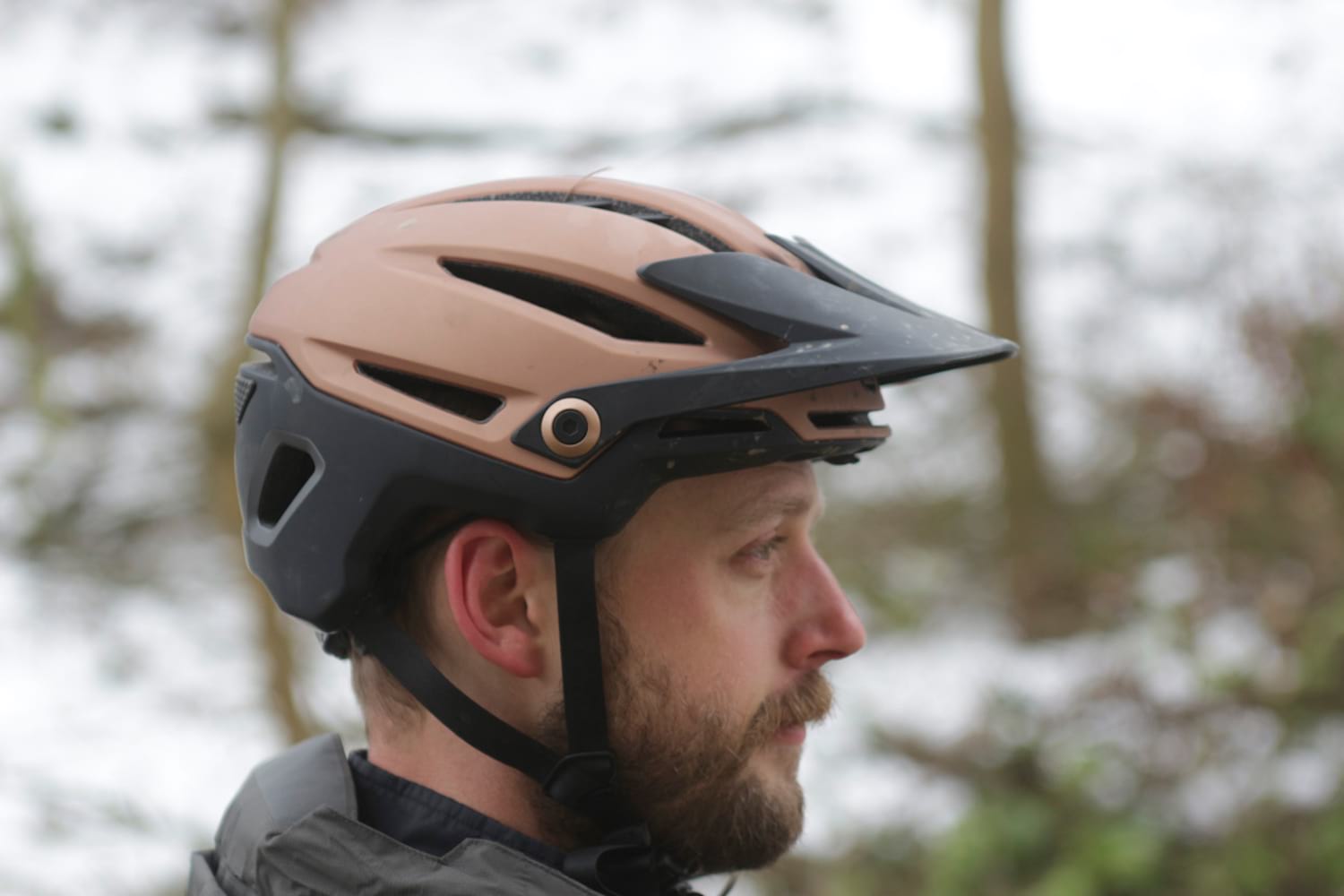





It’s a shame it’s not got the removable chin-bar from the Super 3, but that’s been taken over by the (now DH certified, which it needed) Super DH, it’s proper competition for the Switchblade now. Still, the Super was an iconic looking helmet, those hexagonal vents were unmistakable – the Sixer just looks like another generic helmet, could be made by anyone.
I reckon I’ll probably still go for the Bell Super DH when looking for a convertible helmet for those alpine trips or bike park days.
Kinda misses the point that the Super had the chinbar option and has simply been revised to the Super DH. So not really a direct replacement, more an alternative. Comparison seems strange.
@ta11pau1 – You’re spot on mate! We’ve also got the new Super DH helmet in at the moment, and it is significantly burlier than the Sixer. We’ll have a review of that in the not too distant future, but I’m really liking it so far, even just in half-face mode.
@sargey2003 – Cheers for reading and for the comment! To help clarify, the new Sixer is designed purely as a half-face trail helmet, and Bell is pitching it as a direct replacement for the regular Super. Bell has also introduced a new Super DH, which takes over from the Super 3R and fills the position as the convertible helmet in the range.
Because the Sixer doesn’t have to make any concessions for being convertible, Bell has been able to make it quite a bit slimmer, more comfortable, and much better ventilated – all while having similar levels of coverage and protection to the half-face Super. The reason Bell did this was because the Super has been a really popular option as a half-face helmet, with many riders never actually considering the additional chin-bar option. For those riders, the Sixer is the ticket.
However, for those who do want the chin-bar option, that’s exactly what the new Super DH is for. Crucially, the new Super DH has been fully redesigned and is now certified to ASTM 1952 standards for use in downhill competition, which was missing from the previous convertible Super. As mentioned above, I’m currently using a Super DH, and it is a very different lid to the Sixer – I’ll have a review coming in the not too distant future.
Hope that helps explain, but just shout out if you’ve got any other queries mate!
ST Wil.
Could be a good replacement for my current Super, I just use a full face for when I need it.
A question, though, I use the Super GoPro mount for my head light, the Sixer mount looks to sit further backwards – do you think this would affect the beam throw?
@jonnym92 – That’s a great question, and one I’m not 100% certain on the answer to, as I’ve not ridden with a helmet light on the Sixer as of yet.
You’re right that the GoPro mount does sit farther back on the helmet, though because the shell slopes downwards quite significantly, my guess is that there wouldn’t be any interference issues with the beam throw – particularly when your head is already tilted down a little in the riding position.
What sort of light are you using?
ST Wil.
I see, it could be ok then. As you said it’s on an angle when riding, I sometimes get a slight bit of a shadow where the peak is on the current Super but not much.
The light I use is a Blackburn Central 800, but that’s likely to change in the future.
It would be of interest (to me anyway) to see how helmets work with lights, exposure etc, for pretty much half the evenings of the year I’m riding with a head torch!
Out of interest, are there any other garments that feature a similar break-off Go Pro mount? I’m interested in getting a helmet with this feature (and the Bell is perfect on paper), but I’m still trying to avoid Bell in the interests of withholding my money from gun manufacturers…
Aaargh, fscking spill chucker: “garments” = “helmets”
@adamthekiwi – For another helmet option with a breakaway GoPro mount, check out the MT500 from Endura that Andi tested and reviewed; https://singletrackworld.com/2017/10/review-endura-mt500-helmet/
I know that Bontrager has an integrated Blendr mount for the Rally MIPS helmet, which you can use for a light or a GoPro camera, but I haven’t used one of those yet so I can’t confirm if it’s of the ‘breakaway’ variety.
I’ll let you know if any others come to mind!
ST Wil
I had this helmet for 2 months until I caught a branch under the visor which snapped the MIPS elastomers which aren’t replaceable. So, a non-impact incident has rendered the lid toast. Maybe a breakaway visor would be better idea… On the plus side the helmet was very cool, well vented and very comfy. The breakaway GoPro mount was almost useless as the merest brush of a leaf would send it tumbling off.